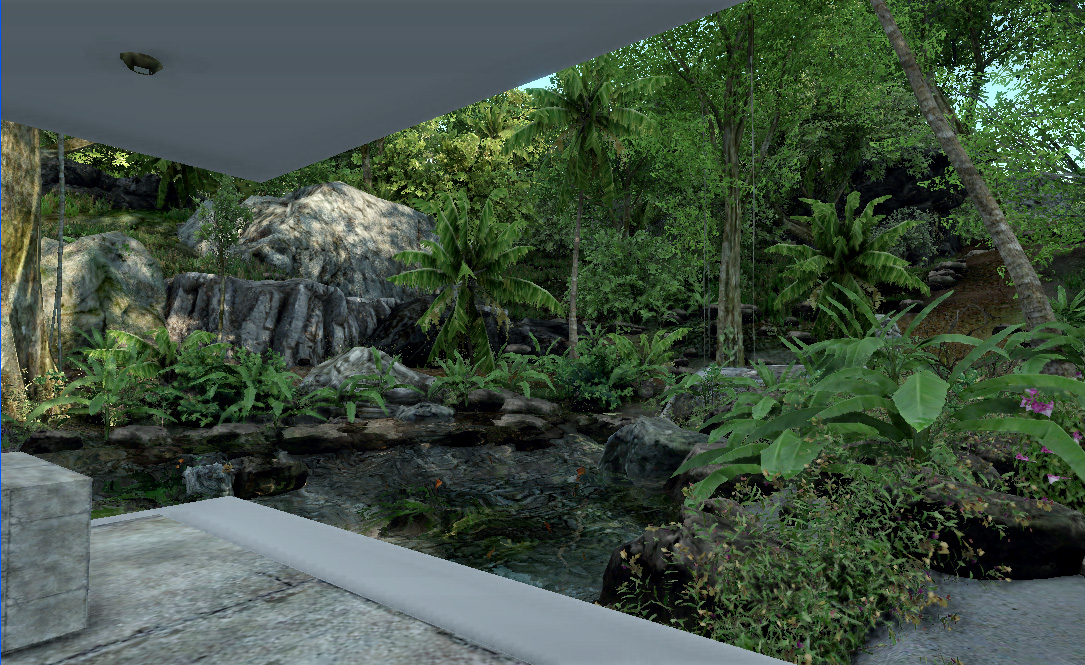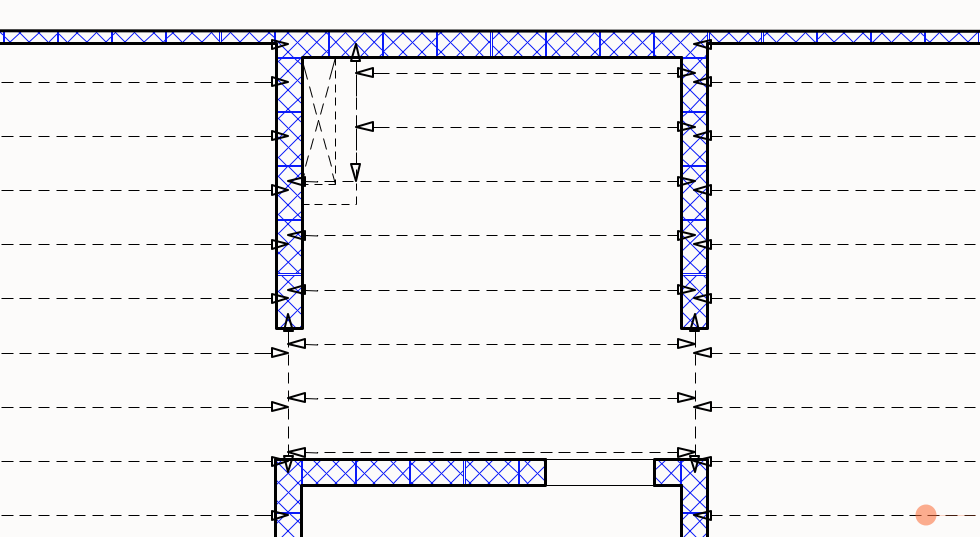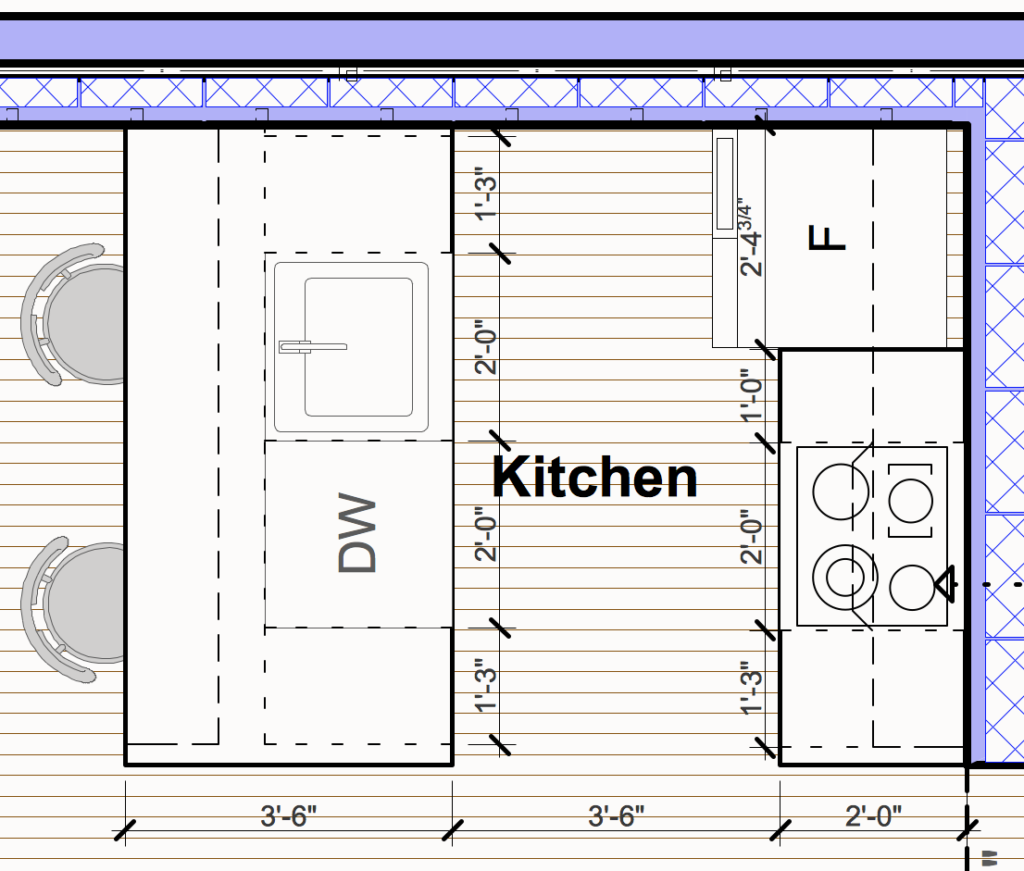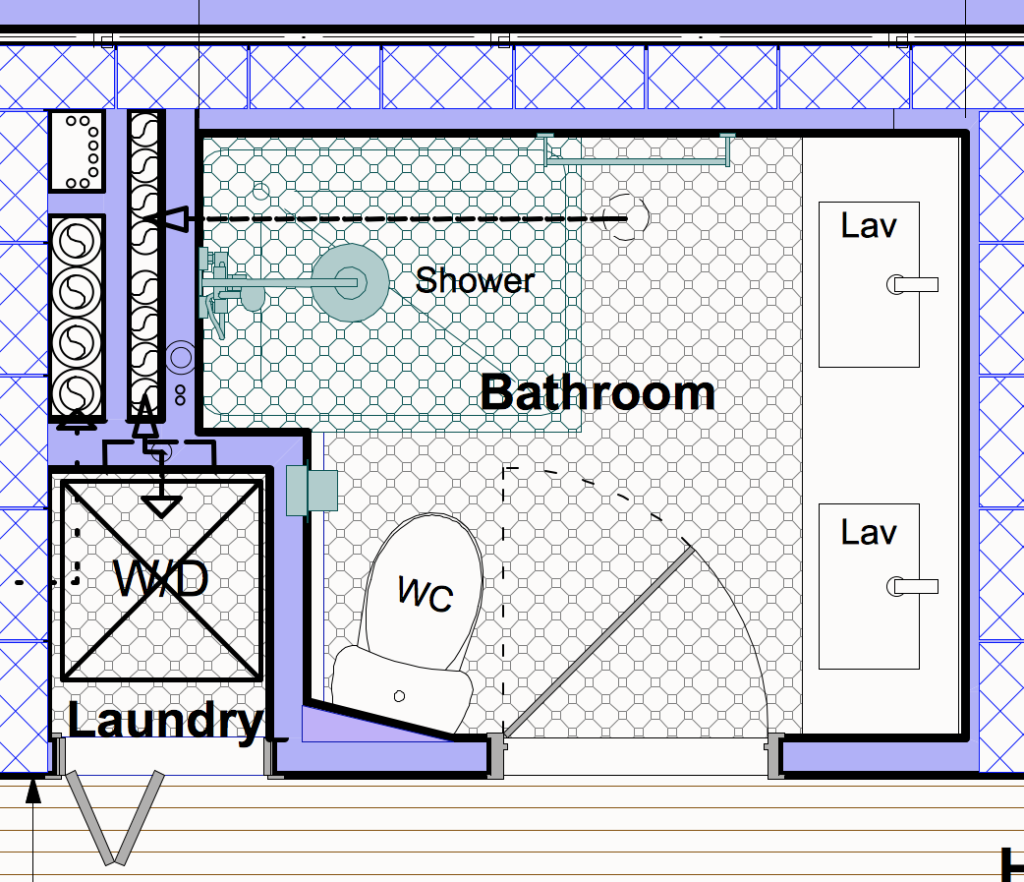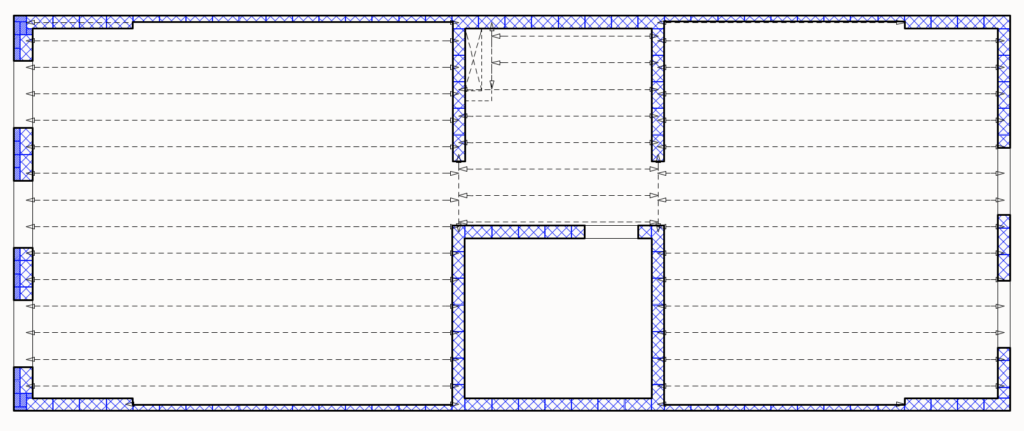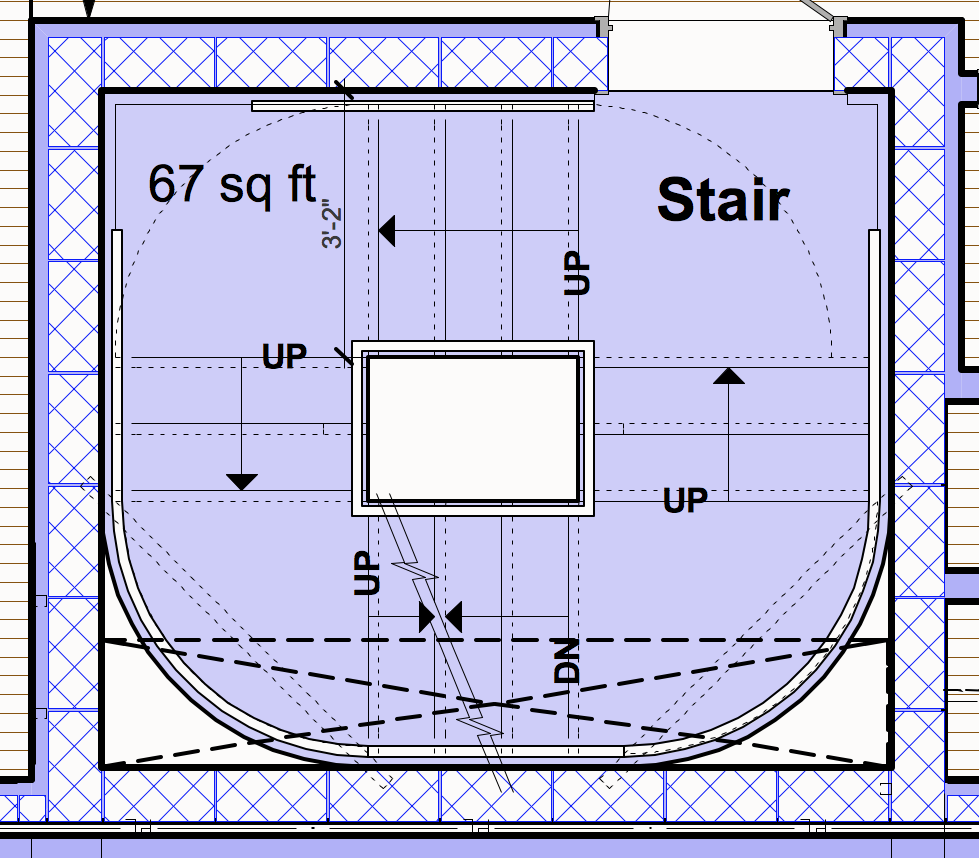For new construction, and in this as other studies to create rental apartments, an Architect is going to be confronted by two likely scenarios, the adjacent buildings have existing party-walls with the property line running through it’s center, or, there are no adjacent buildings and thus new party-walls can be built directly over the property line. In this version of our townhouse plan, we explore the ramifications of an existing party-wall that can not be used as it does not meet earthquake code requirements, or, a new building positioned it’s party-wall completely onto its own property.
This results in slightly less interior space, but also creates a unique situation where the joists can run from the front of the building to the back. The design result, is a 2 bedroom apartment with a huge great room with 3 windows bringing in the light and air, something that most people in New York City, Chicago, Boston or any large city would love to have.
It’s important to note that while there are interior constrictions on rooms because of the use of CMU block walls in the interior, to allow for fire-proofing and structure, the main spaces of the Great Room, Bathroom and Bedrooms remain essentially the same size as in the previous new townhouse floor plan, version 8b. The following plan we will call version 8c, since it is a variation of our Version 8 Townhouse plan.
Features of this version include:
- 20’x50′ Footprint. New Construction, Infill building between new adjacent buildings that have their own party-wall.
- The 50′ length allows for a large Great Room with adequate bedrooms.
- Great Room is very large with easy manipulation of furniture.
- Bedroom 1 is slightly smaller while bedroom 2 is the same. Both have walk-in closets.
- The size of the bedrooms allow for one window in each room (1 less window), which is aligned on the hallway for cross-ventilation.
- Stair is larger, but of compact configuration. This version features a skylight adjacent to the party-wall with cut-outs in the corners to allow light to graze the wall, keeping it interesting despite its small size.
- Bathroom has shower, double vanity, no tub, and is larger. Because of the structure, we are able to have a shower integrated with the floor, so that it slightly slopes to the drain, making the bathroom feel larger. There is no shower door. HC accessible. Door stop prevents door from hitting toilet. Hand held shower and overhead rain shower head.
- Laundry is smaller, stacked units.
- Small coat closet (optional), a must to feel like home, a place for the vacuum and winter items.
- Kitchen, no recessed refrigerator and cabinets and countertop is acceptable (not a large or small kitchen). Plumbing must stay on this side of hallway, thus the kitchen size. 4 Base and 4 Wall Cabinets. Dishwasher, Large Sink. Gas RangeOven, Microwave w/ vent hood exhausting to roof. Modest (not small) refrigerator. Nice large peninsula countertop suitable for stools. Granite or solid surface countertops.
- Joists run front of building to back, making running pipes and ducts a bit easier from the core outward.
- Because the stair and bathroom are surrounded by CMU block walls, this version will cost more to build than version 8b, but on the plus side the CMU interior walls make the building feel strong and quiet (reduction of stair noise).
- The structural slab is concrete on decking, further deadening sound transmission.
Structure
This structure is ideal because of its simplicity. The front facade receives a finished treatment, like brick, while the rear facade receives stucco. CMU block is superior to a stud system in that it can expel moisture if wet, can resist fire, can stop sound migration and is secure from break-ins. It is also resistant to high winds making it feel safe and secure during severe storms.
In this scheme we use 4″ block at the party-wall with a 2.5″ stud on the interior for electrical and expandable spray foam insulation. This helps deaden the sound transmission and keep the interior feeling warm in winters or cool in summers. Using a stud system instead of CMU would take an additional 3/4″ in thickness for an extra layer of plywood, required on our projects for security. While the thicknesses are about the same, there is the issue of finishing the outside face of the party-wall when an existing building is on the adjacent lot. Further, if there is no building, a stucco system would eat up more interior space. With CMU block, the masonry contractor immediately seals up the building as they progress upward, thus eliminating a separate sub-contractor, with all the benefits of a finished, fire-proof, quiet and water-resistant finish once it is installed.
While the structure is unique compared to a traditional townhouse, it results in a feeling of being in a solid structure, a quality that can not be ignored in today’s world of stick-built buildings. The result is a maintenance-free, worry-free building, the kind of building I, Nick Buccalo, always want to deliver to my clients.
Summary
If one is building a new townhouse, this floor plan showing a 2 bedroom rental apartment, and they want to maximize the interior space while keeping the cost of structure to a minimum, then this is the floor plan to strongly consider. It embodies the efficiency design features, the qualities in an apartment that tenants seek and provides a place for your tenants that will keep them happy and wanting to live there for years to come.
After all, if you find a great apartment and it’s more affordable because construction costs are lower than the neighbor, then you’re apartments will stay occupied longer with less downtime. For me, it is about building in insurance by creating both an efficient structure and an efficient layout that helps guarantee the success of my projects.
It should be obvious through the studies being done here, this being version 8c, that any number of factors can have an impact on the layout of an apartment. For instance, the change in orientation means that your front and rear facades will always be fully supported.
Please leave a comments, they’re always appreciate.
